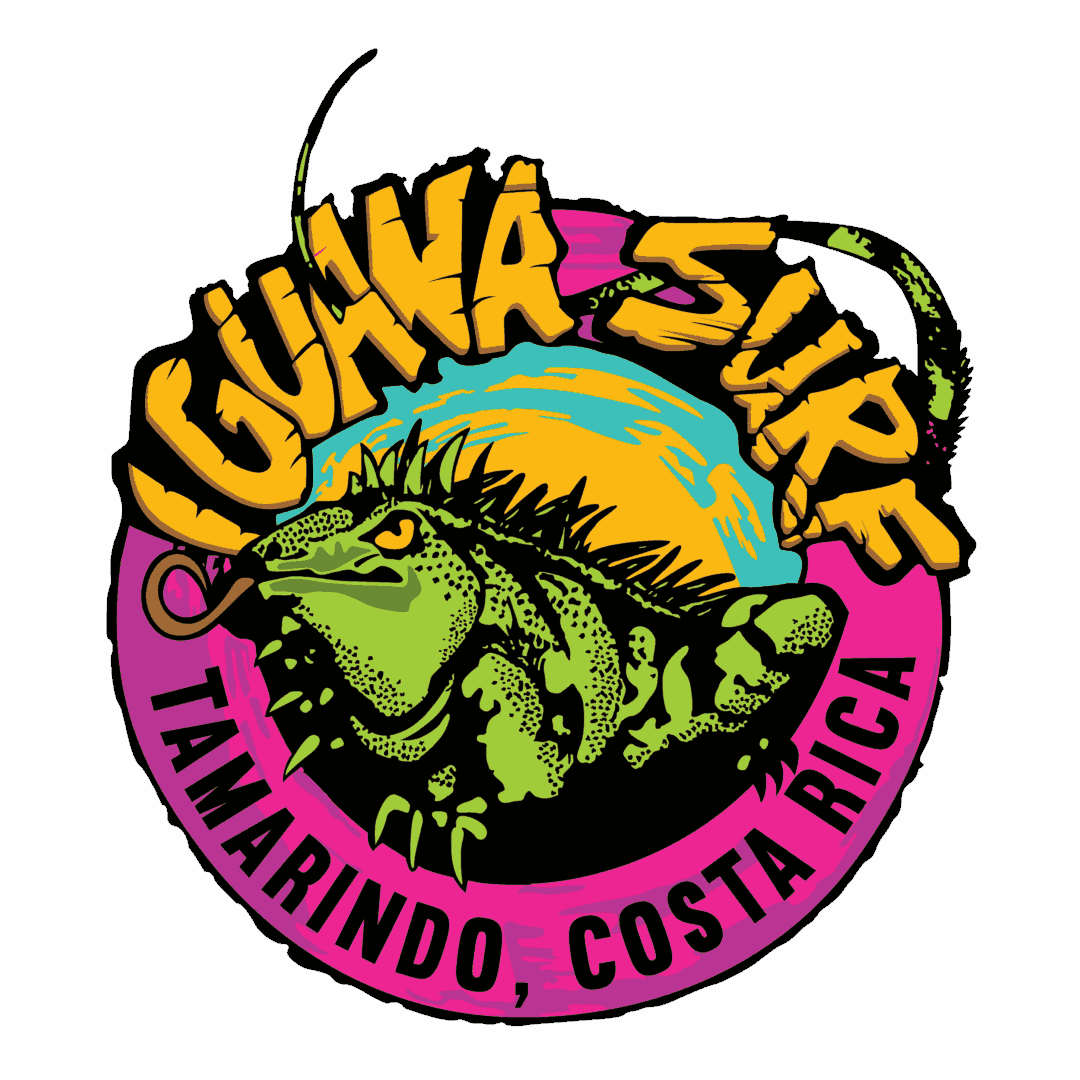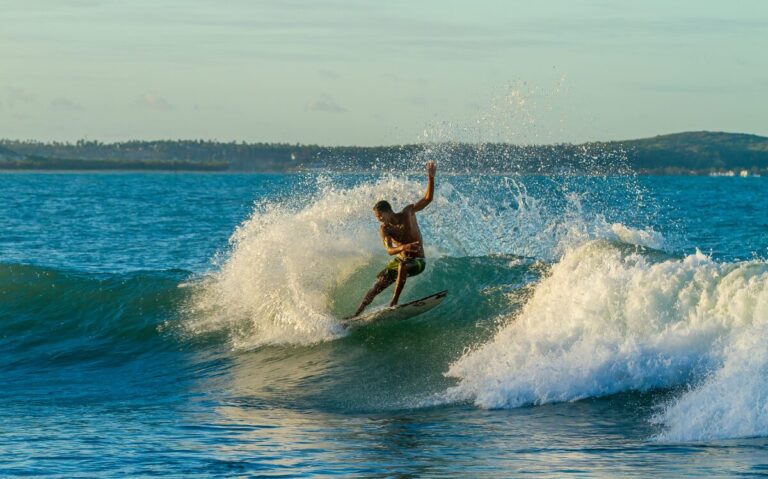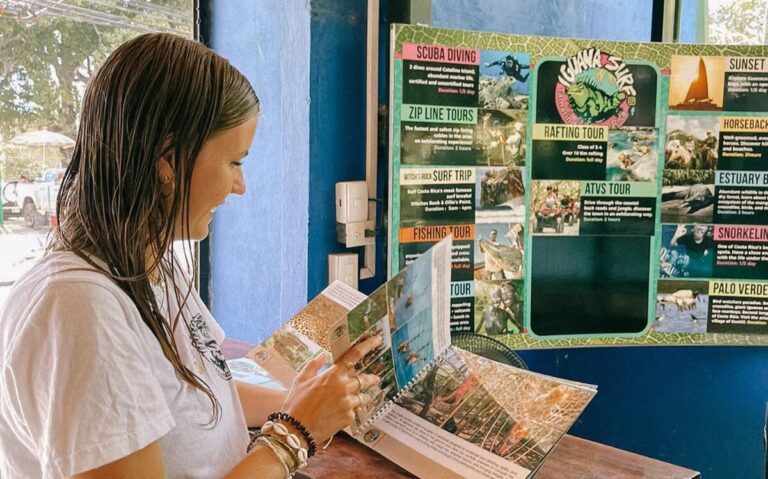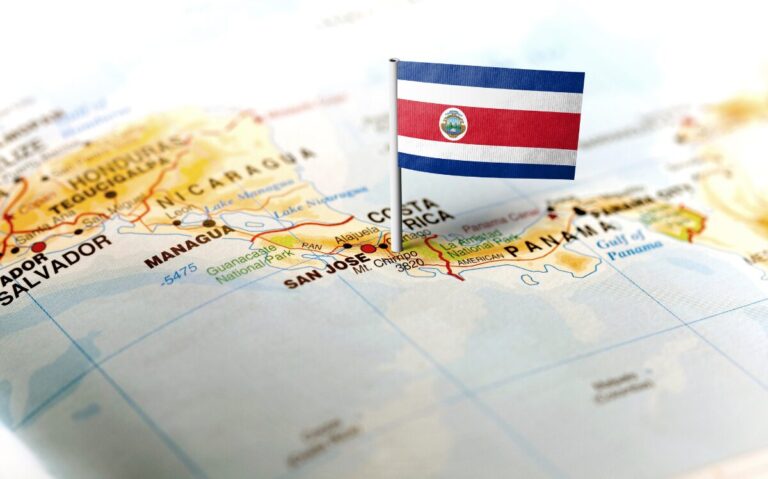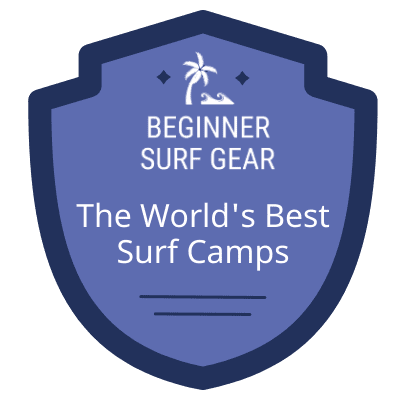Learn to Surf in Costa Rica: A Complete 7-Episode Guide for Beginners
Learn to surf with our short and sweet 7-episode series for beginners!
Often dubbed the best country in the world to learn to surf, Costa Rica offers warm waters, consistent waves for all skill levels, and the kind of laid-back, friendly atmosphere that makes for an ideal learning environment. At Iguana Surf Camp in Tamarindo, we’ve made your journey even easier with our latest 7-part instructional YouTube series aimed at beginners.
Whether you’re just curious about how to surf or seriously planning a beginner’s surf camp (or maybe just to refine your skills) our new series guides you through the most important steps that will help you get there.
Where? Up on a board, riding waves, and having the time of your life!
Episode 1: Stretching & Mobility
Watch a pro at work in the waves and you might be fooled into thinking that surfing is a piece of cake. Well, it isn’t! In reality, surfing is quite physically demanding and can even be damaging if you’re not prepared. You need to be flexible, nimble, and agile to surf properly, have fun, and not do yourself a whole lot of damage. Stretching properly every day, and every time you want to surf, is absolutely crucial for preventing injuries. It can also improve your overall performance – a stiff back or tight hamstrings are likely to seriously hinder your performance. The only thing that should be stiff is your board!
In the first episode of our Learn to Surf series, we’re going to guide you through some basic but great stretches that should become part and parcel of your daily surfing outing. We’ll show you why focusing on your shoulders, back, hips, and legs is important and how to get in tip-top shape for the awesome ride to come.
Episode 2: Priority, Etiquette & Safety
Surfing isn’t just about hopping on a board and catching a wave. It’s also about respecting the ocean and all the fellow surfers sharing your space. Yet surfing etiquette isn’t only about good manners – it is actually one of the best safety nets you can ever build for yourself.
In this second episode, we highlight the rules of wave priority and surf etiquette that every surfer should know. By understanding, adopting, and respecting these rules, you will learn how to safely navigate crowded lineups and not rub anybody off the wrong way or, worse still, injure yourself and others. Being able to immediately read who has the right of way and knowing how to avoid collisions will guarantee a much safer and more enjoyable surf experience in Tamarindo and everywhere else. Safety should be your #1 priority when surfing and rules and etiquette are the groundwork that keeps everyone safe and happy!
Episode 3: Paddling Technique
Paddling is undoubtedly the most tiring part of surfing, but there are clever tricks that ensure you do so smoothly and preserve your energy. Since maximizing your paddling power is key to minimizing exhaustion, and catching waves, we dedicate Episode 3 solely to those clever paddling techniques. Because the last thing you want is to wear yourself out entirely by the time you get to the lineup!
Episode 4: Popping Up
Nailing the pop-up is an absolute game-changer for any beginner and is undoubtedly the most exciting part of learning to surf. That a-ha moment that feels like Christmas has come early!
So, in our next episode, we’ll work on getting you on your feet quickly, smoothly, and elegantly! OK, maybe not the first time, but you will eventually learn what to do to get there.
Learning to pop up on a surfboard is kind of like learning to drive a shift. At first, keeping your mind on multiple different things seems a tad overwhelming, but with time, it’ll all become second nature. Engage your core, push off with your arms, plant your feet just right, balance evenly, and BOOM – YOU’RE UP! Perfecting the pop-up is essential to learning how to surf, so click on the video for clear demonstrations and common mistakes you’ll want to avoid.
Master this skill, and there’ll be no stopping you!
Episode 5: Wave Reading
A wave is a wave is a wave – or so the beginner surfer thinks.
Not so!
Different types of waves need different approaches, so learning to read them is just as important as being able to paddle out or pop up in an instant. Episode 5 is all about wave types, from right-handers to left-handers, A-frames, and closeouts. We’ll teach you the art of selecting waves so you can confidently choose the best ones while avoiding dangerous rip tides and tricky currents.
At Iguana Surf, we often say that surfing brings you “at one” with the ocean and teaches you to read the rhythm of the sea. Learning to read waves is not only a life-saving and life-changing skill for sailors and swimmers, it is also insanely important when you learn to surf, because it teaches you which waves to catch and which ones to let pass.
Episode 6: Punch-Through & Turtle Roll
Paddling out to the back of a lineup would be made that much easier without waves, right? But hey, you’re on a surf beach which means that dealing with breaking waves is kinda the whole point. So, how do surfers tackle this pickle?! Is there some easy technique to make sure you don’t get pulled back to shore with every wave?
Oh, glad you asked!
Let Warwick and Fifo show you the two best techniques for tackling the waves as you paddle out: the punch-through and turtle more. The turtle roll is particularly handy for beginners because it teaches you how to control your board while diving underwater. As you might imagine, a wayward board can be muy dangerous for you and everyone around you.
The punch-through, on the other hand, is a technique that allows you to literally break through the wave without losing momentum. Both of these techniques are amazing to learn and will help you navigate whitewater easily.
Episode 7: Learning How to Turn
Aside from the pop-up, the turn is a sensational skill to learn and do the very first time. Oh man, you feel like you OWN the ocean the first time you turn!
Well, in this final episode, we’ll teach you how to do precisely that. We cover the mechanics of initiating turns and shifting your weight, and how to use your hips for added power. Turning is a skill that lets you ride waves with more style and control, allowing you to carve along the face of the wave. You can easily navigate left or right by using your back foot as a pivot and engaging your core. This episode wraps up the series by giving you the tools to progress beyond the basics and add personal flair to your surfing.
Learning how to surf may seem daunting at first, and we know many newbies feel uncomfortable getting on a board for the first time in front of a bunch of strangers. This is why we’ve thought of creating a 7-episode Learn to Surf series, so you can at least get your head around the basics in the privacy of your own home before heading to a beach.
Remember that the Tamarindo surf community is one of the most welcoming you’ll ever meet. This is a beginner surfer’s heaven, and trust us when we say, “You are welcome here with open arms, newbie!” We ALL remember being newbies, too, and our mission in life is to get more people hooked on the magic that is surfing. We live in paradise and enjoy sharing it with anyone interested in learning to surf.
So, check out our Iguana Surf Camp – we have multi-day options, fantastic accommodation, daily surf lessons, and board rentals, and about the best bunch of surf instructors you’ll find anywhere. We offer comprehensive packages that take care of everything you need – from airport transfers to shared dorm or private room accommodation, we’ve got an excellent in-house café, a host of great tours and activities, and – more importantly – Costa Rica’s best beginner’s surf beach outside our front door.
So, what are you waiting for?
Come join us!



